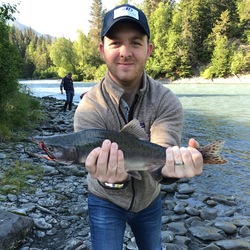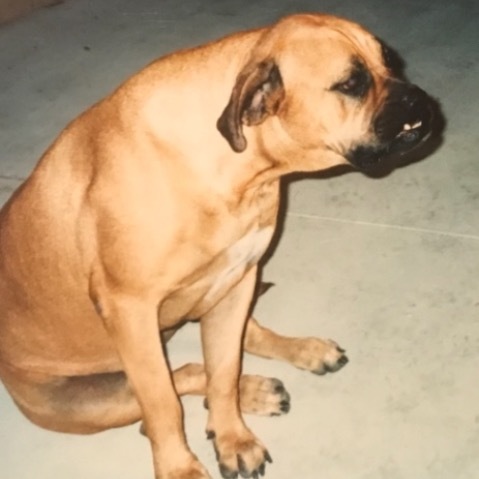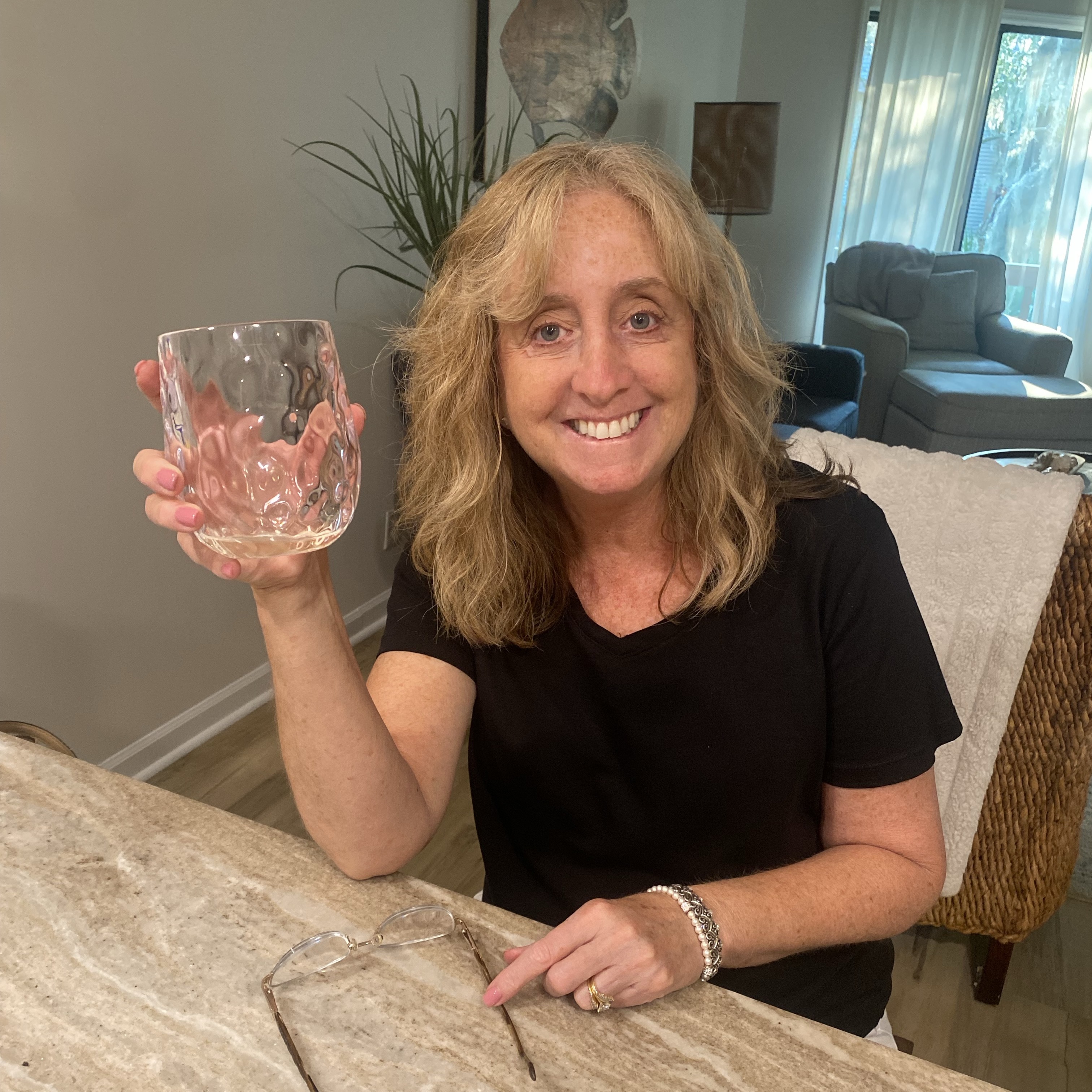The Winery At Bull Run
MAN Family Wines
Free-Run Steen Coastal Region Chenin Blanc
Really nice, crisp, minerally chenin blanc. At this price point, it's everything I want from a wine. — 6 years ago
Pax Mahle Wines
Pax Quail Run Vineyard Valdiguié 2017
I just received the release of this delicious, fun table wine from @Pax Mahle. This is AKA Napa Gamay, and the general resemblance to Beaujolais is obvious. The nose, here, reminds you of Pax Syrah. Clean garrigue aromas wrapping luscious juice, just at a shallow depth. Palette is soft and lifted, with very primary fruit atop fine tannins and juicy acidity. — 7 years ago
Press Run
Sonoma County Cabernet Sauvignon
Very good - balanced and fruity Cabernet. 13.99 at total wine. — 7 years ago
Hopes End Wine
Run Away To The Dark Side To A Place Called Port Misery Shiraz Blend 2016
Pretty solid red blend for $9.99 at Martins. For the price, it's one of the better wines. — 7 years ago
Covey Run
Columbia Valley Riesling
Had this at Sip with my wife. Would definitely have again! — 7 years ago
The Winery at Bull Run
Meritage Red Bordeaux Blend 2014
Meritage Reserve 2014- wine club pick up 12/17. strong tobacco and licorice flavor. — 7 years ago
Château Pichon Longueville Comtesse de Lalande
Pauillac Red Bordeaux Blend 2005
Pichon Lalande is my favorite 2nd growth with a steak. Yup...it's #SteakandClaret night to quote my buddy Gary Westby. Further, it's certainly one of my favorite producers period. I've waited for this wine to be in the bottle for 10 years before finding out definitely how good it was or wasn't. You see, the 05 Bordeaux vintage was exceptional. It's drinking right now better than 00. 00 may turn out to be better, but not for some time. The real issue was the division of scores between RP & NM. Parker had this as low as an 86 and now has it at 89. Neil Martin has been consistently at 95-96. I found it simply inexplicable that Pichon Lalande could have bombed in such a great vintage. Tonight, I know they didn't. This wine is beautiful. Although, I don't believe it will cellar as long as their some of their very best vintages and many others I've enjoyed. On the nose, bramble, ripe blackberries, dark cherries, notes of blueberries, poached strawberries, graphite, baking spices, cedar, lightly perfumed violets and dark, fresh & dry red flowers. The body is medium-medium plus, tannins nicely resolved with 10 years to be completely resolved. Fruits of; ripe blackberries, dark cherries, notes of blueberries, poached strawberries and pomegranate with a whiff of spice. There's notes of dry bramble, soft leather, fresh violets, graphite, cedar, dry stones, dark rich earth, limestone, tobacco, spice-box, vanilla, very light cinnamon & nutmeg. The finish is very long, elegant, ripe, round, smooth, good acidity and beautifully elegant...50-50 earth & fruit. I bought more bottles of this at $85 after it's was first released in futures and I do not regret it. $85 is proving to be a steal for this wine when it normally sells for between $100-$150 a bottle and higher. Might heavy up further after tonight if I find more around the same price. Oh yes...I'm with NM on the scoring. Photos of the Chateau, estate vines, newer tasting room & the Virginie de Pichon-Longueville, Comtesse de Lalande. Forgive my long post, but my passion and love for this producer is profound. Producer history and notes...as I wrote in an earlier post for Pichon Baron, Pichon Baron and Lalande started as one entity. The first mention of what is now called Chateau Pichon Lalande was the creation of Pierre de Mazure de Rauzan. Pierre de Mazure de Rauzan is responsible for forming many of the top Bordeaux estates today. Pichon Lalande was given its name when Therse, the daughter of the founder received the estate as a dowry when she married Jacques de Pichon Longueville. Pichon Lalande was essentially managed by three women, Therese de Rauzan, Germaine de Lajus and Marie Branda de Terrefort. On the eve of his death in 1850, Baron Joseph de Pichon Longueville divided the property between his five children. His three daughters received Pichon Lalande and his sons Pichon Baron. What happened next was Virginie, the wife of the Count of Lalande took over the management of the estate under the name of Comtesse de Lalande. In 1850 she commissioned the popular, architect Duphot to build a residence inspired by the Hotel de Lalande, located in Bordeaux. Without heirs, Pichon Lalande passed down from aunts to nieces. Following World War I, the Miailhe brothers, bought Pichon Lalande in 1925. They were the ones who planted even more Merlot. May-Eliane de Lencquesaing, the daughter of Edouard Miailhe became the new owner and general manager of Chateau Pichon Lalande in 1978. She expand the size of Chateau Pichon Lalande from 40 hectares to it's current 89 hectares. Chateau Pichon Lalande remained in the same family for more than 250 years! In fact, over three centuries, only two families have owned Pichon Lalande. May-Eliane de Lencquesaing sold Pichon Lalande to the owners of Roederer Champagnein in January 2007. This family-run company is managed by Frederic Rouzaud who owned several other wine estates in Bordeaux; Chateau Bernadotte, Chateau de Pez, Haut Beausejour and Chateau Reaut la Graviere. He sold Chateau Bernadotte in December 2012. In February, 2011, Sylvie Cazes was named the director of Chateau Pichon Lalande. She replaced Gildas d’Ollone. Sylvie Cazes was replaced in 2012 by current Director Nicolas Glumineau, who was previously at Chateau Montrose. In 2012, Pichon Lalande renovated the estate with a budget estimated at over 15 Million Euros. The new facilities included; building of a new underground barrel aging cellar and several new buildings...one that houses their new tasting room as shown. This renovation provided numerous improvements in their wine making. Most importantly, in the vinification. They created a new, triple tiered, cellar where everything moves by gravity. They also added numerous new, stainless steel, temperature controlled, double skinned vats. These new vats allow Pichon Lalande to vinify on a parcel by parcel basis as well as get much softer & gentle extractions. The 89 hectare vineyard of Chateau Pichon Lalande is located adjacent to Chateau Latour and and across the road from Pichon Baron. The terroir of Chateau Pichon Lalande is deep gravel with clay and limestone soil and is planted to; 61% Cabernet Sauvignon, 32% Merlot, 4% Cabernet Franc and 3% Petit Verdot. — 8 years ago

Charles Heidsieck
Brut Réserve Champagne Blend
I had this a number of times but, have never written notes. 🎶Tonight’s the Night!🎶
The nose reveals; lemon custard to candy, lime zest, grapefruit, pineapple, green apple, light stone fruits, green melon, lychees, cream, vanillin, light ginger, cream soda, mixed nuts, bread dough to baguette crust, light green herbs, beautiful, powdery chalkiness, sea shell fossils, volcanic minerals, yellow lilies, jasmine with mixed greens.
The body is; full, round, rich and slightly creamy. Lemon custard to candy, lime zest, grapefruit, pineapple, green apple, light stone fruits, green melon, lychees, cream, beeswax, vanillin, light ginger, white spice with some palate heat, cream soda, touch of caramel, toffee notes, nougat, marzipan, mixed nuts, bread dough to baguette crust, light green herbs, beautiful, powdery chalkiness, sea shell fossils, volcanic minerals, yellow lilies, jasmine with mixed greens. The acidity is crisp and sharp. The long finish is; rich, polished, elegant, nicely balanced, delicious and persists endlessly. Very good at its price point.
Photos of; the House of Piper Heidsieck, the train cave ride as Champange caves can run for miles and miles, artful cellar entrance and one of their Grand Cru vineyards. — 6 years ago


Jonata Winery
Flor Ballard Canyon Sémillon-Sauvignon Blanc Blend 2014
14’ Jonata Flor . 90% SB 10% Semillon Alc 15.2.
Pale gold in color. The palate is full of apricot, honey, lemon custard. Racy citrusy notes run through the palate. Moderate acidity with a great finish. Tasting much different then it did just a year ago.
Pairing perfectly with the crabcakes/fish tacos/Lemon Pizza at Kesté NYC😋 @ADAM STROMFELD Thank you for the six pack. You’re the man! — 7 years ago

Rene Rostaing
Ampodium Côte-Rôtie Syrah 2010
2010 was a very good vintage in Rhône. Rostaing is a well know producer with people that know and drink Northern Rhône wines, not so much with others that do not. The Ampodium is the entry level into Rene & Pierre Rostaing wines. It is a blend of 13 vineyards in Northern Rhône. They are simply one of the very best producers in the region. I spent an afternoon with Rene & his son Pierre tasting in the their cellar and in their La Landonne vineyard as shown in the photos. The 2010 is drinking beautifully with many good years ahead. On the nose; ripe & slightly stewed/baked fruits of; blackberries, dark cherries, strawberries, creamy raspberries, stewed plum, black raspberries, cherries, steeped fruit tea, dry crushed rocks, iron pan, some white & black pepper, bacon fat, grilled savory meats, pork, black licorice, black cherry cola, decayed & fresh red florals with violets. The body is round and medium full. The tannins round, still a little chewy & around 55% resolved. The length, texture, tension and balance are in near perfect harmony. The fruits are; round, ruby & ripe; slightly stewed/baked fruits of; blackberries, dark cherries, strawberries, creamy raspberries, stewed plum, black raspberries & cherries. Steeped fruit tea, dry crushed rocks, chalky minerals, iron pan, coffee grounds, spice, some baking spices w/hints of vanilla, white & black pepper, drying blood, dry herbs/bay leaf, dry stems, moderate levels of bacon fat & pork, grilled savory meats, black licorice, black cherry cola, decayed & fresh red florals with fresh violets for days. The acidly is round and dripping. The long finish is plush, velvety delicious and lasts & lasts. In good vintages, I would put this in blind with the best of of the best new world wines from any vintage that many love; SQN, Booker, Saxum, Alban, Cayuse, Horsepower etc.. I’d bet most of you would pick it over these producers that cost much more $$$. It’s simply one of the best pound for pound wines/producers for this varietal. Especially, for the $$$. Wow, what a wine for the $. $55 upon release. Photos of; Winemaker Pierre Rostaing and our group in their La Landonne vineyard, the small sign that barely identifies their Estate, an example of the Quartz mineral that runs throughout their La Landonne vineyard and the view back onto the river from the top of the very steep La Landonne Vineyard. Producer notes and history...Rene Rostaing produced their first wine in 1971. However, it took almost three decades before wine became a full time occupation for Rene Rostaing. Domaine Rene Rostaing came about through marriage. The wife of Rene Rostaing was the daughter of the famed Cote Rotie grower, Albert Dervieux, and the niece of Marius Gentaz-Dervieux who gave Christine the vineyard land that became the Northern Rhone estate for Rene Rostaing. Through inheritance from Albert Dervieux Thaize (his father-in-law) who retired in 1990, and from Marius Gentaz Dervieux, his uncle, Rene Rostaing expanded his holdings, giving him some of the best terroir in Cote Rotie. The new vineyard land was basically 3 small parcels in the La Landonne, Cote Brune and Vialliere lieux-dits. This initial expansion from his initial tiny parcel, allowed Rene Rostaing to change careers and become a full time vigneron. Since 2007, the estate has managed by Pierre Rostaing, (son) of Rene Rostaing. Currently Rene Rostaing owns 7.5 hectares of vines that is spread out among 20 different parcels located in 14 locations. Perhaps the most celebrated vines of Rene Rostaing are the 1.6 hectares of vines they own in the La Landonne vineyard (photo). On La Landonne, the vines are more than 60 years old. Some vines are even close to 100 years of age! Those are his largest holdings. The smallest vineyards of Rene Rostaing are located on Cote Blonde. Rene Rostaing also has vines planted in; Fonjean, La Vialliere, Le Plomb, Bouchare, Leyat, La Roche and La Tupin. Their oldest vines are more than 70 years old and are used for Rene Rostaing Cote Blonde. The majority of those plantings are on the steep hillsides with mica, schist and rocky soils. 25% of those vines are closer to the bottom of the slopes and on the flats. Rene Rostaing remains a traditional Cote Rotie producer who is not among the last to harvest. His wines are aged using very little new, French oak barrels. On average, Rene Rostaing Cote Rotie are aged in about 10% new French oak barrels. Rene Rostaing produces 4 different Cote Rotie wines. Rene Rostaing Ampodium, which was previously known as Rostaing Cuvee Classique, is a blend of 13 sections of different vineyards, but it does not include their best holdings on La Landonne or Cote Blonde. The fruit for Rene Rostaing Ampodium has at least 40% or more of the stems removed and run between 12-13.5% abv. The wine is usually made from 100% Syrah and is aged in an average of 15% to 25% new, French oak barrels. The amount of new oak can be less, depending on the character of the vintage. About 1,750 cases are produced each year. The wine is no longer called Cuvee Classique, the name was changed to Rene Rostaing Ampodium with the 2009 vintage. Rene Rostaing La Landonne comes from a terroir consisting of sands with iron oxide and traces of quartz. This wine is always produced from 100% Syrah. The grapes are partially destemmed, with about 10% to 20% of the stems removed, depending on the vintage. There are vintages when no destemming takes place. The remainder of the grapes are whole bunch fermented in stainless steel vats. Rene Rostaing is not a believer of using too much new oak for the aging, which on average uses 10% new, French oak barrels and the remainder of the harvest is aged in demi-muids (600 liter) and French oak barrels. This wine is like most wines from La Landonne, masculine and meaty in character, requiring at least a decade to soften and develop. On average, Rene Rostaing La Landonne produces less than 600 cases depending on what the vintage delivers. Rene Rostaing Cote Blonde is perhaps his best. It’s produced from a blend of 95% Syrah and 5% Viognier. The grapes are co-fermented. The vineyards is planted in the region call Arzel. Arzel is a poor, mineral laden soil with deposits of Silex and Mica on a steep hillside. The vines are more than 50 years of age. The grapes are partially destemmed…35% to 50% of the stems are removed. The remainder of the grapes are whole bunch fermented in stainless steel vats.
The remainder of the harvest is aged in demi-muids. This one is the hardest to find and most collectible of all their wines. In fact, they only produce close to an average of 350 cases of Cote Rotie in most vintages. Rene Rostaing Cote Brune made its debut with the 2013 vintage. The vines were once part of the holdings of Marius Gentaz, which eventually passed to Rene Rostaing. Rostaing replanted those vines in 2000. Made from 100% Syrah. — 7 years ago
Roots Run Deep Winery
Educated Guess Napa County Cabernet Sauvignon 2016
Good cab for the price. $17.49 at Costco — 6 years ago
Run Riot Wine
Central Coast Pinot Noir
Great $5 value at TJs. Not as much depth as some pinots but sure wish I bought more. — 6 years ago
Meyer Family Vineyards
Okanagan Valley Pinot Noir 2016
A great Okanagan Pinot Noir from a family run winery. Good balance, the right amount of acid with a touch of cranberries. Sipping this wonderful wine at Island Lake Lodge the home of world class cat skiing ⛷ on a beautiful Christmas Eve. Cheers 🎄🍷🇨🇦 — 6 years ago


Hubert Lamy
En Remilly Saint-Aubin 1er Cru Chardonnay 2010
I bought my first vintage from this producer & terroir beginning with the 2010 vintage and what a vintage to start. I bought four bottles for right around $50 or a little less. They were so amazing, I drank through them in no time at all. For those of you that read my posts, that’s not normally what I do. I like to drink one & age the rest. Since then, I have looked & looked for more. I’d finally given up hopes of finding more until recently I struck gold. I should have bought all nine bottles but a calmer head prevailed. It’s definitely changed since having it fresh. On the nose, the fruits are slightly macerated. Heather honey, beeswax, golden & green apple, pineapple upside down cake, slight orange citrus blend, mango, glazed nuts, soft, delicate, chalky minerals, a touch of jasmine & yellow lilies. The body is much rounder & thicker than when it was young. Waxy. So, beautifully layered across the palate. Much of the palate matches the nose. Heather honey, beeswax, golden & green apple, apricots, peach, pineapple upside down cake, slight orange citrus blend, mango, slight molasses character & glazed nuts with citrus blossoms, yellow lilies & jasmine. The minerals are much more grippy & bold as they cut across and set on the palate. The acidity round & phat. The texture is amazing as is the length, balance & beautiful, rich, long finish that lasts two-minutes plus. So glad I found more of this wine! Hubert Lamy seriously over deliver the terroir & the price point by a country mile. If you are not buying this wine on pre-arrival, you are missing great wine and excellent value. Can’t say enough good things about it. Especially, the 2010. I expect the 15 to hold similar quality. Photos of; Olivier Lamy, Olivier working in this vineyard, barrel room and their Criots-Bâtard-Montrachet Vineyard. Producer notes and history...There have been Lamy’ s growing vines in St-Aubin since 1640, today it is run by Olivier Lamy. Olivier is a new breed of Burgundian grower keen to progress. He trained Méo-Camuzet & made a number of vintages before taking over in 1996 from his father Hubert. Hubert Lamy used to sell fruit to négociants, but that stopped in 1997. He grubbed up and sold off peripheral vines, keeping only the best and oldest sites. Currently he is experimenting with different planting densities in a quest to capture even greater expression of terroir. The Domaine produces both reds and whites and now has 16.5 hectares of vineyards, mostly in St-Aubin but also own a few parcels in Chassagne-Montrachet and a tiny plot in the Grand Cru Criots-Bâtard-Montrachet. Yields are kept low and recent innovations have been introduced with selection tables in the cuverie to ensure that only the healthiest and ripest grapes are used. His more recent move to reduce the amount of new oak with the introduction of demi-muids 300-600 liter barrels have also helped to improve the wines. Vinification is traditional and the wines are matured with only 20-30% new oak for 12 months before minimal filtration and then bottling. The quality is very high and is often superior to many wines from much more prominent villages that sell at twice the price or more. — 7 years ago
The Winery at Bull Run
Reconciliation Red Blend 2015
My favorite wine at Bull Run — 7 years ago
Jamiesons Run
Billy's Shadow Cabernet Sauvignon
Good body, sweet at the front, dry finish, fruity notes — 8 years ago
Paul Bara
Spécial Club Grand Cru Brut Rosé Champagne 2012
This run of about 13 PHENOMENAL wines I'm posting are from the SQN wine dinner/WNH interview I did at @Shawn R 's house last night. I was like a kid in a candy store on Christmas. What an absolutely EPIC night! Love ya brother!
Ok, so, wow, you know the night is going to be insane when this is the welcome sparkler! Rosé champagnes are becoming a favorite of my wife and I and Shawn seems to be the man when it comes to them. I've never had Krug Rosé, but I can't imagine it being better than this. The fresh strawberries, kiwis and knock your socks off acidity on this made me a believer in this stuff. — 8 years ago


Le Macchiole
Bolgheri Rosso SuperTuscan Blend 2007
Black cherry, cassis and cedar. Integrated tannins at this point. Developing nicely with a few more years to run. — 8 years ago










Ming L
The 2010 Esprit de Beaucastel from Tablas Creek was a tough act to follow, but this elegant Rhône blend from Sonoma just did that.
The nose was quite similar with aroma of blue fruits and earthy elements with hint of violet, it was the palate that set it apart: soft, complex and deep, with great texture and beautiful acidity that adds the tension. Elegant and seamless.
Kale Anderson was the long time wine maker at Pahlmeyer, and Kale wines are all vineyard-specific. Worth seeking out. — 6 years ago